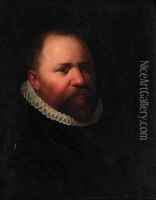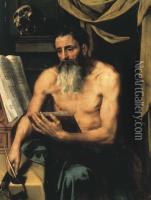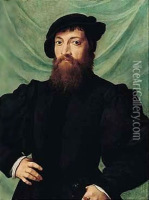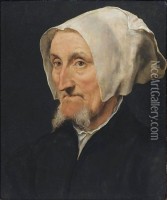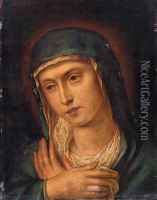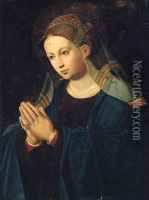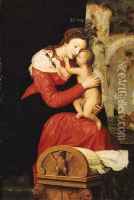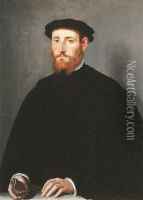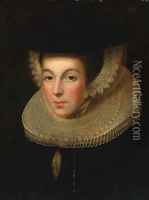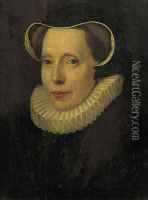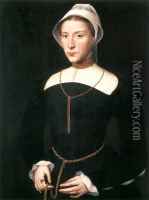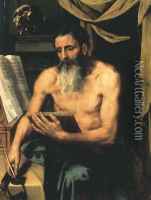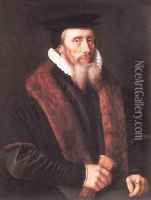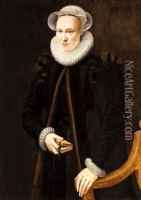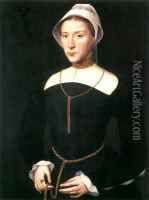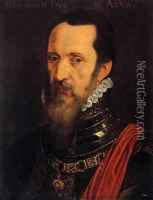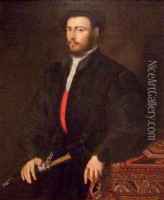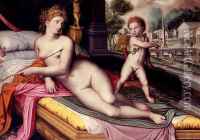Willem Adriaensz Key Paintings
Willem Adriaensz Key was a Renaissance painter from the Southern Netherlands, now modern-day Belgium. He is believed to have been born around 1515 in Breda, which was then part of the Duchy of Brabant. Key was a contemporary of artists like Pieter Bruegel the Elder and was significantly influenced by the style of his teacher, Adriaen van Overbeke, as well as the esteemed Antwerp painter Quentin Matsys.
Key predominantly worked in Antwerp, a city which was, during the 16th century, a bustling hub for commerce and the arts. He became a master in the Antwerp Guild of St. Luke in 1542 and was recognized for his portraits and religious compositions. His portraits often depicted wealthy and influential individuals in meticulous detail, reflecting their status and character. Key was skilled in capturing the textures of fabrics and the subtleties of facial expressions.
The artist's religious works often contained intricate allegories and biblical references, executed with a deep sensitivity to color and light. Although not as widely known today as some of his contemporaries, Key's work was highly valued during his lifetime, and he received commissions from prominent patrons, including members of the nobility and religious institutions.
Unfortunately, not many of Key's paintings survive to the present day, and his work has been sometimes overshadowed by other artists from the same period. However, his contributions to the Northern Renaissance and the development of portrait painting in the Low Countries are acknowledged by art historians. Willem Adriaensz Key died in Antwerp in 1568. His legacy is preserved in the few works that remain and in the records of the Antwerp Guild of St. Luke, which testify to his once-prominent standing within the vibrant artistic community of 16th-century Antwerp.
